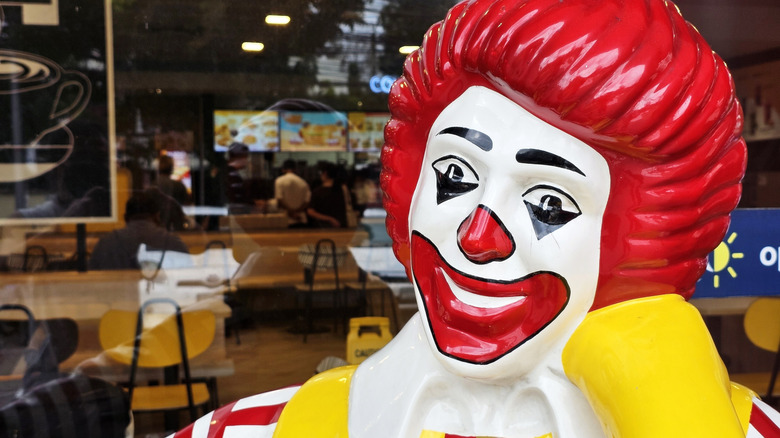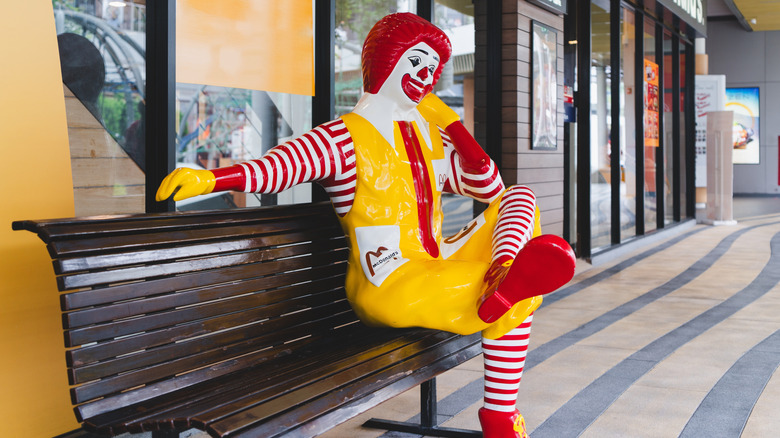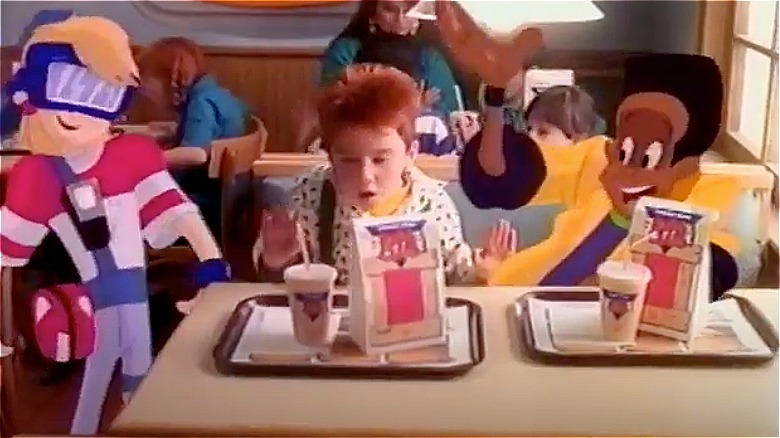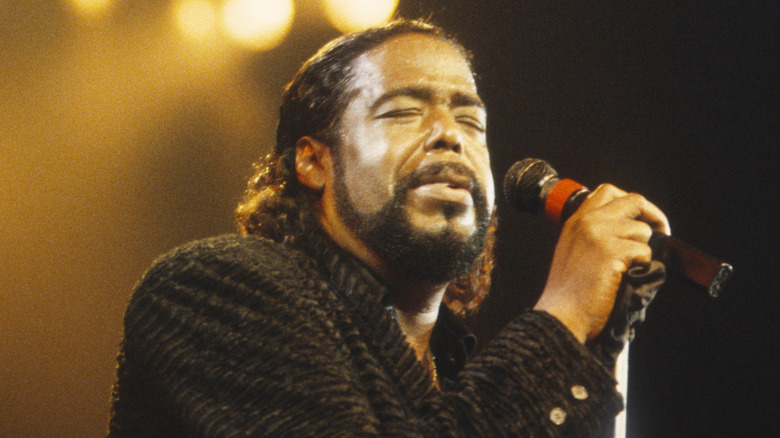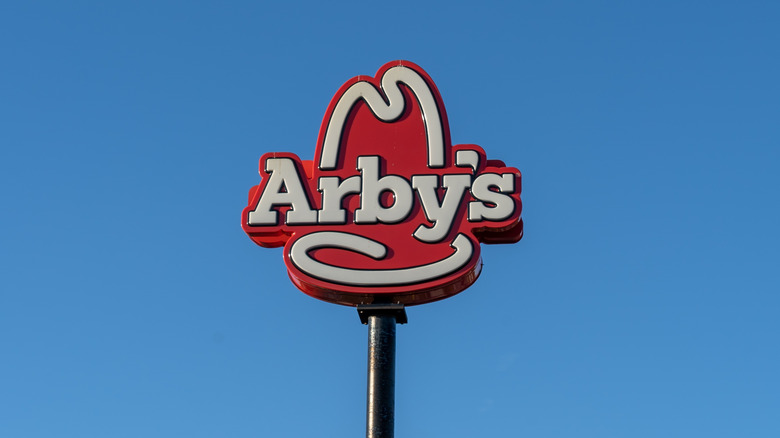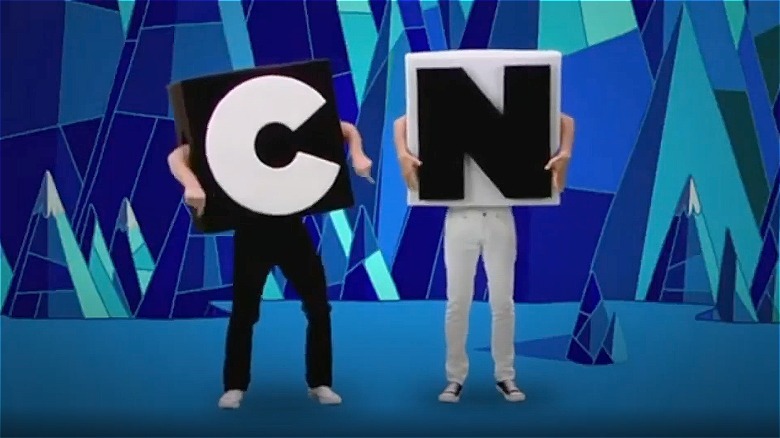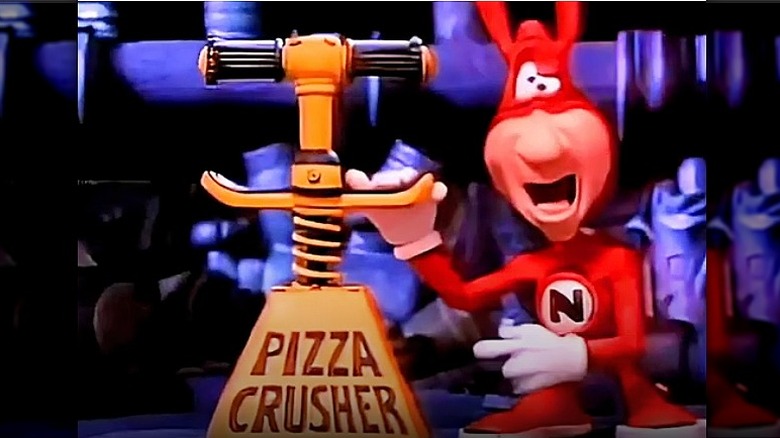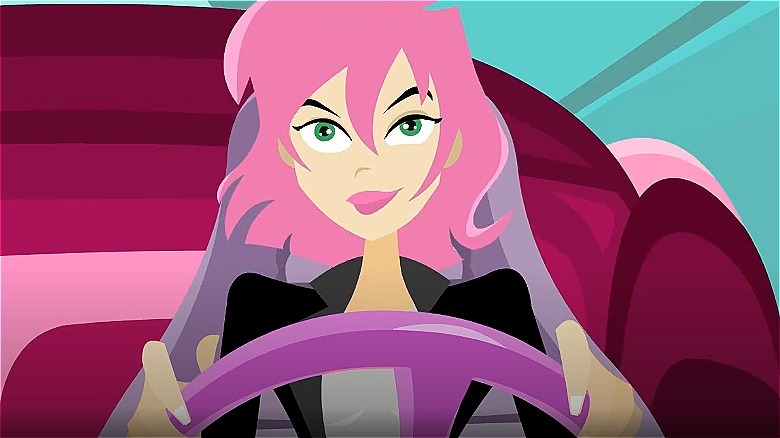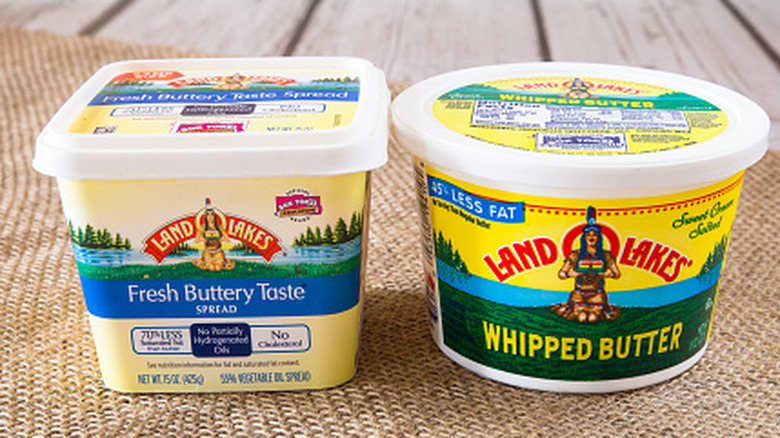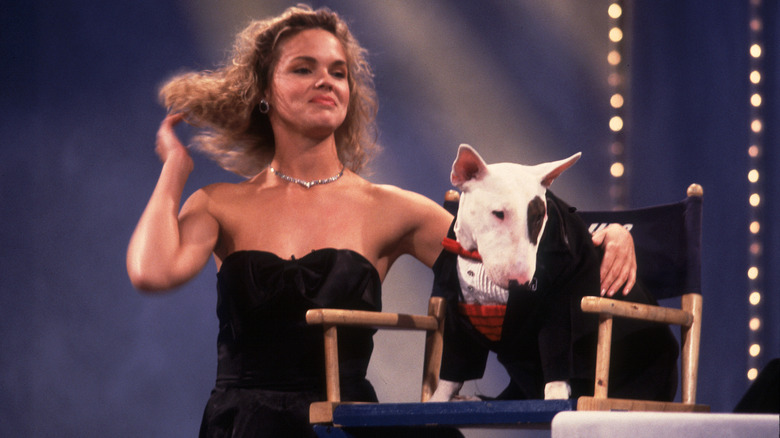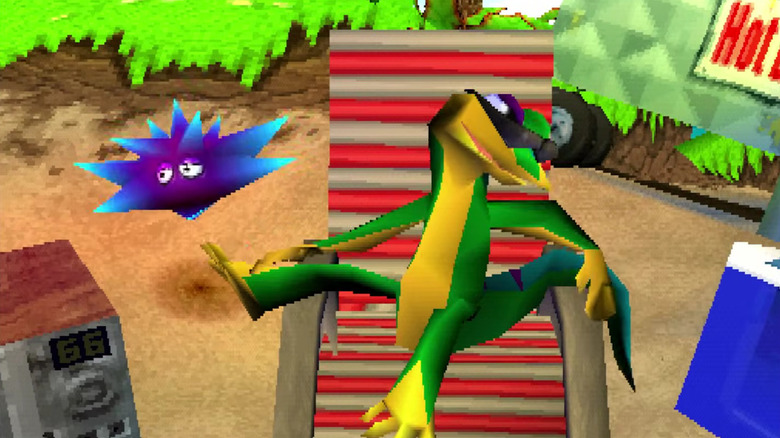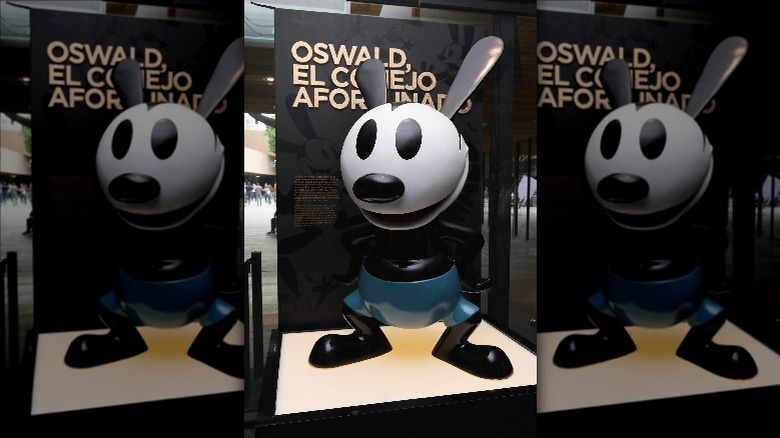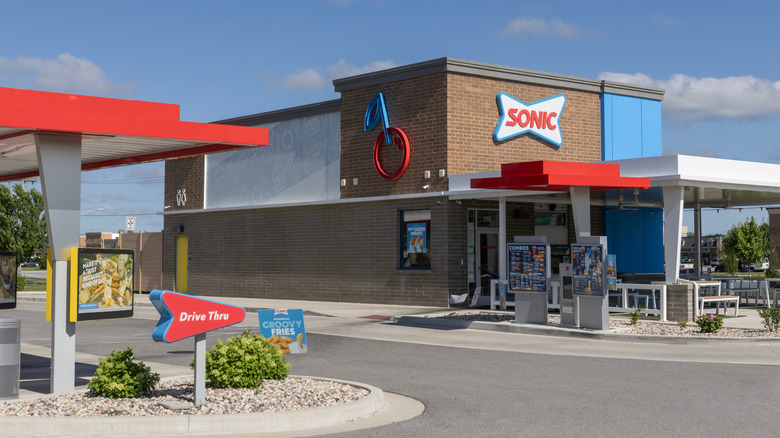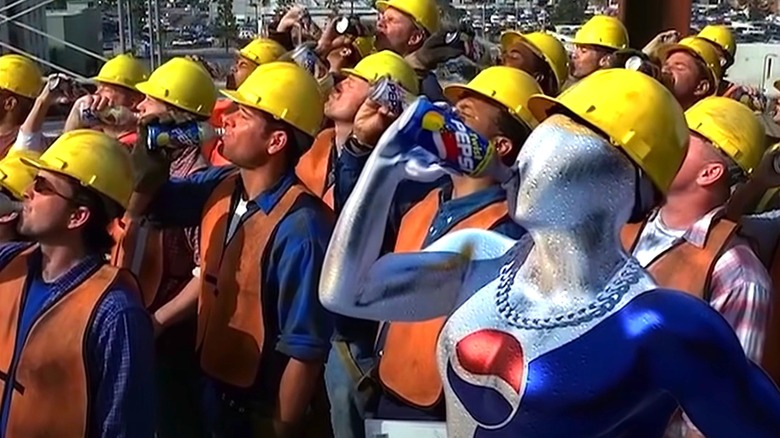Popular Mascots That No Longer Exist
Imagine the thought process of the first person to come up with a mascot. It's an inherently absurd idea. In 1877, Henry Seymour and William Heston invented a fictional Quaker to market their groundbreaking breakfast cereal, Quaker Oats. Their logical justification was that the Quaker lifestyle implies the brand image Seymour and Heston wanted for their cereal. The brand lives on with the same mascot, but not every fictional character is as effective a salesman as the hand-drawn Quaker Man.
Marketing is a fickle industry. As companies grow and change, they need new messaging to communicate their desired image to the public. Mascots have become less common as the years have gone on, but the modern iteration of the concept comes in all shapes and sizes. Some brands, like Mars' M&M's, carry their comedic mascot characters through multiple generations, consistently evolving with the times. Some corporate mascots become more controversial than others. Other companies reasonably conclude that some branding decisions have an expiration date, forcing them to kick their mascots to the curb.
Ronald McDonald
Ronald McDonald became the grease-painted face of McDonald's in 1963. Twelve actors have portrayed the character through official channels. Ronald traveled with a coterie of fast-food friends, including Evil Grimace, but he was usually the centerpiece of the eatery's advertisements. Through comics, books, video games, cartoons, and even a brief cinematic appearance, Ronald McDonald could reasonably become the mascot for the concept of mascots. Today, however, Ronald has been pushed out of the spotlight. He remains key to the Ronald McDonald House Charities organization, but he's been consistently absent from McDonald's advertising since 2016.
The hamburger-happy clown entered his seemingly permanent hiatus after a rash of bizarre clown sightings in 2016. Pranksters dressed as killer clowns appeared in various locations worldwide, ruining the general reputation of circus professionals. McDonald's reasonably concluded that it was a bad time to center Ronald in its marketing. While the killer clown craze was certainly a factor, some critics suggest that McDonald's may have pulled Ronald after years of complaints. The Chicago Tribune reported statements from Corporate Accountability International director Sriram Madhusoodanan. The CAI repeatedly criticized Ronald as a Joe Camel-type figure designed to sell unhealthy food to kids. Madhusoodanan argued that the clown controversy may have been a convenient cover to let Ronald slip into the shadows. Whatever the reason, Ronald has been relegated to the background.
The Burger King Kids Club Gang
A lot of fast food brands tailor their mascots for their younger consumers. A grown-up isn't likely to choose their lunch destination based on their favorite colorful characters, but marketing to kids is much easier. Burger King targeted younger demographics with the Burger King Kids Club Gang. The company has churned through a lot of mascots in its time with varying levels of success, but the Kids Club Gang was a hit. The animated ads featured a diverse band of radical '90s teens with one-note personalities and charming gimmicks. The cast included a hardcore gamer called Kid Vid, a child genius called I/Q, and a boy named Wheels who used a wheelchair.
The Burger King Kids Club Gang was a success. The New York Times reported a substantial lift in sales after their introduction, but after the 1990s, the brand heralded in the new millennium with a woeful replacement. After dispensing with the Burger King Kids Club Gang, Burger King brought out the Honbatz. The instantly forgotten characters were 2-D shapes ostensibly targeted at pre-teens. Looking back now, updating the Kids Club Gang might have been a more straightforward path toward continued success. The gang still has plenty of nostalgic fans.
Arby's Appetite Man
In the early 2000s, Arby's sought to increase its market share with adult fast food fans. While other brands tossed around their clowns and cartoon characters, Arby's tried to aim for a more mature audience. The resulting "Appetite Man" ad spots featured groundbreaking soul singer Barry White in the role of a customer's personified desire for food. White's Appetite Man encourages customers to "give in to [their] grown-up tastes." His smooth, seductive voice almost never mentions anything about the brand itself, relegating the task of actually selling Arby's food to another, presumably less famous, vocal performer.
Arby's tried the Appetite Man spots for 18 months before moving on. Arby's Franchise Association President John Lauck was surprisingly candid on the subject, telling The New York Times that Appetite Man "didn't break through, and didn't capture the attention of consumers." Arby's was in a tough spot due to declining sales in the early 2000s, forcing it to run through multiple potential mascots in a relatively short time period. As soon as the company set Barry White aside, Arby's moved on to a talking oven mitt that seemed far less explicitly targeted toward adult consumers. As of 2024, the closest Arby's has to a mascot is the voice of "Pulp Fiction" and "Mission: Impossible" star Ving Rhames, who has delivered the chain's iconic slogan since 2014.
The Arby's Oven Mitt
The early 2000s were a difficult time for Arby's. The brand used a talking oven mitt as its mascot in 2003, shortly after it employed Barry White as its short-lived Appetite Man to appeal to adults. The new character, known only as "Oven Mitt," took a slightly educational approach to the brand's marketing. Oven Mitt explained that Arby's restaurants roasted the eponymous roast beef (or "R.B.") used in their sandwiches. Mitt drew a hard line between Arby's methods and those of other fast food brands, which often fry or grill their food. He also sang songs, many of which appeared to annoy the Arby's employee characters he worked alongside. Actor Tom Arnold provided the character's voice.
Arby's released several pieces of merchandise alongside its Oven Mitt character. Customers in 2004 could enter participating Arby's restaurants and purchase their own oven mitt with the character's distinctive face on the front. The company donated just over 50% of every sale to Big Brothers/Big Sisters. Unfortunately, the launch did little to help the Oven Mitt character land. Chief Marketer reported Arby's issuing a recall of its oven mitts after the marketing agency involved in the product "found quality concerns." While the Consumer Product Safety Commission didn't specifically request a recall, Arby's offered a refund to anyone who brought back their mitt. The chain abandoned the mitt a few months later.
C and N
Since Cartoon Network launched in 1992, it's undergone several full rebranding campaigns. The general aesthetic of the Warner Bros.-owned network changes every couple of years, making it unrecognizable for returning fans. Cartoon Network regularly alters its bumpers, transitions, and IDs. In 2010, the network launched the "CHECK It" branding, featuring 3D animations centered around its checkerboard logo. Cartoon Network hired legendary internet sketch comedians Brian McElhaney and Nick Kocher (known together as BriTANick) as its new live-action mascots, C and N.
Cartoon Network used several cartoon figures as short-term mascots, but C and N were a new frontier. McElhaney and Kocher donned matching black and white outfits, covering their heads with massive, box-shaped representations of the brand logo. They were the voice of the network for six years. Their mid-roll sketches filled the time between various cartoons, adding a bit of humor to the ad breaks. Their brief interactions were, essentially, short comedy sketches with little to no relation to the usual Cartoon Network material. They also did more straightforward advertisements for upcoming shows, online content, and merchandise. Their antics are preserved on YouTube, but they left the brand in 2016. The characters' final known appearance was in a Juicy Drop ad from 2017, but McElhaney and Kocher were no longer involved.
The Noid
The Noid was a particularly antagonistic mascot. He was a rambunctious imp creature clad in a red jumpsuit and brought to life through claymation during the late '80s and early '90s. The Noid's purpose in life was harassing Domino's delivery workers, forcing them to miss their 30-minute delivery time limit. The character actually outlived the fast-delivery policy. He starred in several well-received ads and a couple of video games, though his planned Saturday morning cartoon never came to air. The Noid retains a strange level of fame, still viewed with some nostalgia by those who saw the original ads.
The Noid's legacy took a turn for the grim when a man named Kenneth Lamar Noid became enraged by what he perceived as targeted harassment from the online ads. In 1989, Noid took two employees in a Georgia Domino's hostage for five hours. No one was harmed, but Noid later died by suicide after a stint in a mental institution. In a 2018 episode of the Studio 360 podcast (via Slate), Domino's employees firmly state that Noid's actions and death had nothing to do with the Noid's retirement. They point out that the campaign ended four years before Noid's death. Still, the two events remained linked in the public consciousness. That may be why the 2021 effort to bring the Noid back proved short-lived.
If you or someone you know is struggling or in crisis, help is available. Call or text 988 or chat 988lifeline.org
Erin Esurance
Esurance launched in 1999, becoming one of the first insurance providers to offer services entirely online. It operated for five years before launching its first mascot. The company created a pink-haired secret agent character called Erin Esurance who could appeal to men in the 18-to-24 demographic. Esurance produced more than 30 ads starring Erin between 2004 and 2010. It was a hugely successful ad campaign at first. Two factors resulted in the mascot's sudden disappearance: She suffered a tremendous drop in audience popularity, and online artists created a truly stunning amount of pornography based on the character.
In a 2009 poll by E-Score, consumers gave Erin low marks in "appeal," "sincere," and "believable." She scored very highly in "annoying," suggesting that the public had grown increasingly tired of the character. The only positive trait that Erin excelled in was "sexy," leading to the other major issue. Priceonomics chronicled the overwhelming prevalence of NSFW artwork featuring Erin, which frequently overtook all other images of the character in searches. Artists interviewed for the piece discuss the impressive profit to be found in drawing Esurance's once-innocent mascot for an adult audience. Given that the character's only devoted audience had little interest in insurance, Esurance wisely set Erin aside in 2010.
Mia
Mia was the Indigenous woman who first appeared on the box of Land O' Lakes butter in 1928. She underwent several redesigns in her nine-decade run on store shelves, consistently drawing attention from many observers. Mia was the subject of a lot of debate. Some Native American voices called for the company to remove Mia, while others celebrated the depiction of an Indigenous woman in an iconic brand image. In 2020, the company fully phased Mia out of its marketing. This decision got the same mixed reaction that Mia often did during her long tenure.
As early as 2005, the American Psychological Association warned against the dangers of companies, organizations, and sports teams using Native American mascots. They called for their removal, citing the potential damage to Indigenous children. Cherokee Nation citizen and Brown University professor Adrienne Keene told the Minnesota Reformer that "It's a great move." The praise was not universal. In 1954, Ojibwe artist Patrick DesJarlait created Mia's most notable redesign, updating the character with a more authentic dress and background. His son, Robert DesJarlait, wrote an op ed for The Washington Post that celebrated Mia and expressed dismay at Land O' Lakes' decision to remove her. Mia is gone, but the discussion surrounding her is still worth having.
Spuds MacKenzie
Spuds MacKenzie was a bull terrier who served as the face of Bud Light in the 1980s. Ads heralded him as "the original party animal" and depicted him attending various celebrations with the charming energy of an oblivious animal. The canine performer behind Spuds was actually a female bull terrier from Illinois by the magnificent name of Honey Tree Evil Eye. The ads had a certain absurdity to them — Spuds mostly just stood or sat around, receiving overwhelming praise and attention from the surrounding partygoers. Maybe he'd play the drums or push a case of Bud Light into frame, but he was usually fairly stationary. The New York Times reported a whopping 20% increase in sales between 1987 and 1988, attributing that rise partially to Spuds' popularity.
Spuds was one of the most famous dogs in history, but he also attracted a ton of negative attention. South Carolina senator Strom Thurmond, a hardcore teetotaler, waged war against Spuds, accusing the dog of marketing alcohol to kids. A Christmas ad that dressed Spuds as Santa also ran afoul of the Ohio Department of Liquor Control. The central concern, again, was that the cute dog appealed to children. Bud Light set Spuds aside in 1989, four years before Honey Tree Evil Eye passed peacefully in her home. The character returned only once, for a 2017 Super Bowl ad.
Gex
Gex is an anthropomorphic gecko from the iconic mascot platformer era of gaming. During the 1990s, video game companies began to master 3D gameplay, prompting them to lean heavily on the platformer genre that would most benefit from the technology. Gex and dozens of other animal mascots popped up as protagonists of those titles. Gex was the mascot for Crystal Dynamics, the studio famous for "Legacy of Kain" and several "Tomb Raider" titles. Gex starred in three titles between 1995 and 1998. The character spoke almost entirely in a string of insufferable pop-cultural references, horribly dating his every appearance.
Gex is still a presence in modern gaming. In 2022, a YouTube account under the name "justZ00t" posted footage of a demo for an unreleased fourth "Gex" title. The following year, Limited Run Games announced a remastered compilation title called "Gex Trilogy" for release in 2024. Unfortunately, Gex's role as a mascot is no longer available. Publisher Square Enix sold Crystal Dynamics to Embracer Group in 2022. Square Enix maintains the rights to Gex, but Crystal Dynamics doesn't appear to be involved in modern incarnations. Though Gex is still present in occasional re-releases, he's no longer representing anything but himself.
Oswald the Lucky Rabbit
Oswald the Lucky Rabbit was the predecessor to Disney's enduringly popular mascot, Mickey Mouse. Walt Disney and Ub Iwerks created Oswald in 1927 for a series of short cartoons, all of which were produced at Walt Disney Studios. Universal owned the rights to the character, leading to a long hiatus for Oswald once Disney created and provided the voice for Mickey. Oswald came back into the spotlight in the 2000s. Disney subsidiary Buena Vista Games imagined an Oswald-themed game, prompting Disney CEO Bob Iger to reach out to Universal. Amazingly, Disney got Oswald back by trading sports commentator Al Michaels to Universal.
The resulting game, "Epic Mickey," centered Oswald's story. Despite that brief blip in popularity and a few other appearances in Disney properties, Oswald mostly disappeared back into obscurity after his triumphant return. As of 2023, the initial Oswald shorts became a part of the public domain. Just as Mickey's debut recently entered public domain, Oswald's early work is available to anyone. As a result, horror filmmaker Lilton Stewart III has a horror movie entitled "Oswald: Down the Rabbit Hole" in the works. Oswald could become more familiar than he used to be, but his mascot days are over.
The Two Guys
From 2002 to 2010 and again after 2012, Sonic Drive-In ads employed the talents of improv comedians T. J. Jagodowski and Peter Grosz. Known only as "the Two Guys," Jagodowski and Grosz sat in their car, sharing their thoughts and their food. These ads followed a familiar double-act structure. Grosz played a sardonic straight man, while Jagodowski offered increasingly silly interjections and questions. Sonic initially phased out the Two Guys in 2010, but the two performers created a series of unsponsored ads to win their gig back in 2012. The YouTube campaign eventually placed them back on TV, though not forever.
In 2020, Sonic shifted away from the Two Guys again. Marketing Dive spoke to several professionals involved with the transition, citing changing demographics, a desire to expand, and the COVID-19 pandemic for the course adjustment. Sonic's new ads maintained the general structure of the Two Guys commercials but nixed Jagodowski and Grosz. Instead, a selection of families and friend groups performed the same general routine. The Two Guys marketing strategy is oddly still in place, though the Guys themselves are absent.
Pepsiman
Pepsiman is a rare case of a character becoming more popular long after his days as a mascot came to an end. Pepsi Co.'s Japanese branch developed Pepsiman in the '90s. He appeared in 12 commercials in different forms, often altering his appearance to match various cans. Pepsiman is a tall, muscular, shimmering humanoid being whose only calling in life is to bring Pepsi to the masses. The first ad opens with a crying child, forcing Pepsiman to run cross-country to get that kid a soda. Amazingly, George Lucas' ILM provided the 3D animation work that brought Pepsiman to life.
Most who know Pepsiman know him from the 1999 PlayStation title of the same name. The game has been a mainstay among lists of obscure games. Fans frequently cite it as one of the weirdest games ever, keeping it in the public eye. IGN hailed it as a groundbreaking progenitor of several gaming trends before calling for a remastered edition on modern consoles. YouTuber Devnul created a stellar documentary on the subject, combining a mountain of original reporting with several interviews with ILM staff. Though he hasn't sold Pepsi in decades, Pepsiman is still running through the hearts and minds of fans.
For more on mascots of yesteryear, read our feature about popular fast food mascots that vanished.
